Operational Level Agreements and how to better track team level efficiency
Service Level Management is one of the most important practices in ITIL 4 to ensure that services are designed in accordance with Service Level Targets mentioned by the customer. When a customer raises an incident or service request, there should be some kind of indication on when that support ticket will be resolved or service request fulfilled, this obligation between customer and service provider is often referred to as an SLA (Service Level Agreement). There can different service levels based on priority, type of customer and various other parameters.

Efecte and most ITSM tools provide ways to measure Service Level Agreement and related statistics.
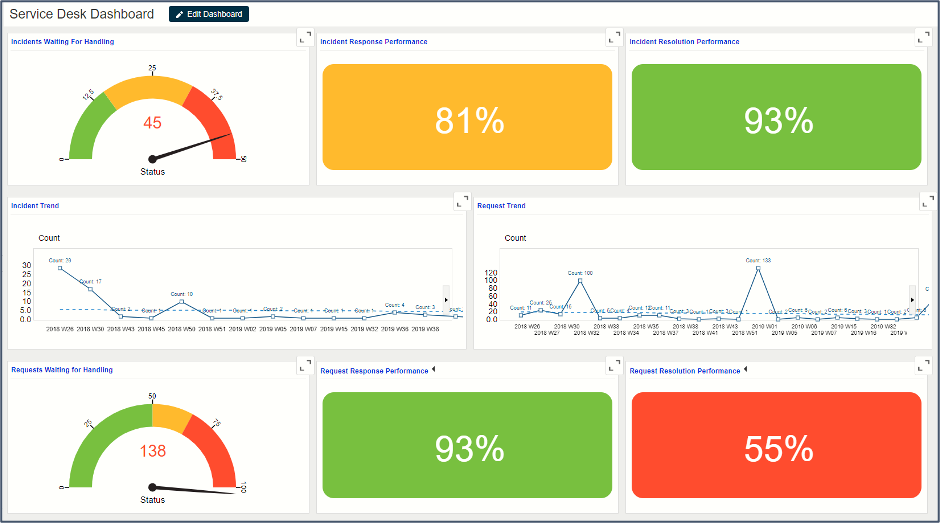
It’s also a basic expectation to have service levels for responding to and resolving the issue. ITSM is way too complex that every single issue can be resolved by a service provider who is serving customers. A service is often dependent on various components of IT infrastructure to be efficiently delivered to end users. It would have an infrastructure that a certain provider manages, and often leverages applications that another vendor provides. So, service providers must work closely with the application provider and infrastructure providers to ensure that services are delivered as per Service Level Agreements. There are also scenarios where accountability of first and second line support varies within an organisation. This is where OLA comes into the picture. OLA stands for operational level agreement. OLA is an agreement between an internal organization and a service provider. Operational Level Agreements need to be designed in a way that supports SLA so that SLA breach scenarios can be avoided. Various teams like the first-line service desk, second-line support, and application development team can be involved in resolving a ticket. Hence it is critical to measure the time the ticket has been held with various teams so that it is easy to figure out which team was responsible in case of an SLA breach. When multiple teams work on a ticket, it is quite natural for the first team to blame the second team and the third team to blame the second team. Clear-cut OLA definitions can help address this issue. OLAs are typically between different units in IT. OLAs and underpinning contracts are more tactical in nature, and arrangements should be in place with internal support providers and external suppliers.
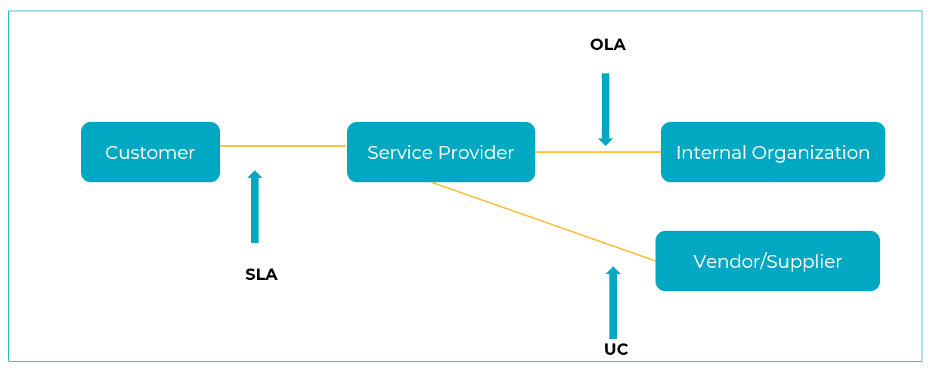
Efecte ITSM is well known for configurability and can address this problem statement. It’s important to define operational level agreements for various teams which are involved based on historical data.
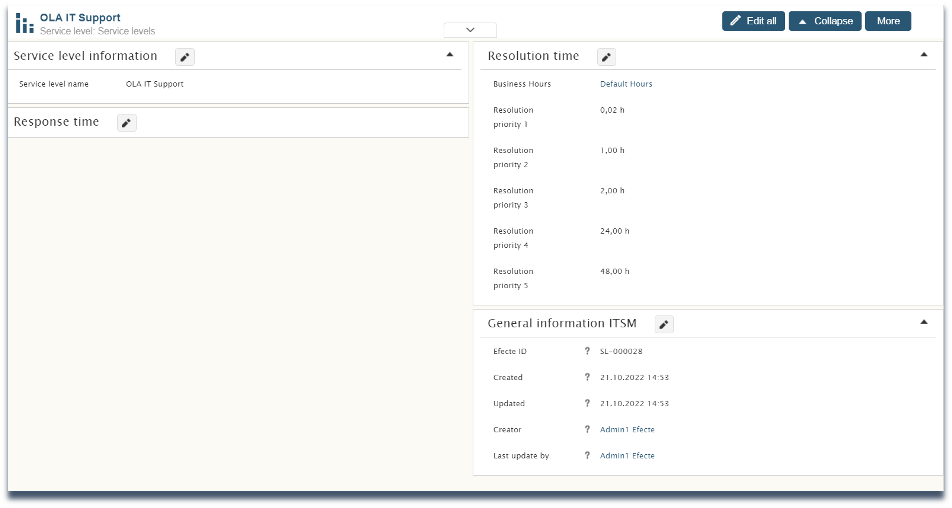
And then OLAs can be linked to the respective teams.

Efecte allows organizations to calculate OLA breaches based on the OLA configured.
OLA Breached

OLA Met

It also demonstrates how much time has been spent by various teams towards resolving the ticket.
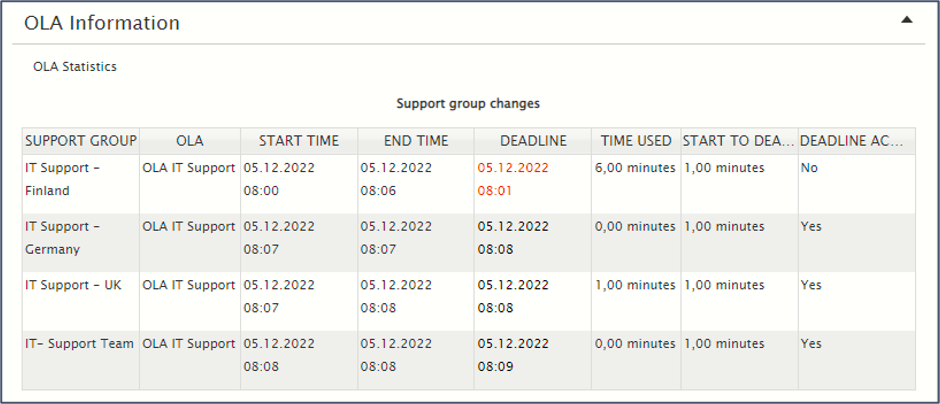
More importantly it addresses the scenarios where the clock must be stopped when we are awaiting the customer. It changes the deadline automatically to accommodate wait times.
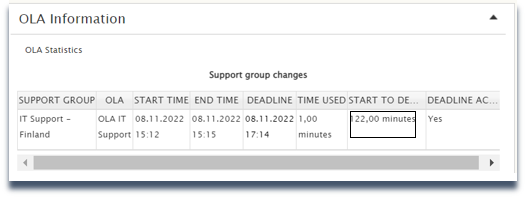
Efecte’ s unique reporting capabilities allows customers to report the key metrics with the final objective being measurement to improve the service quality, not penalize the responsible parties.

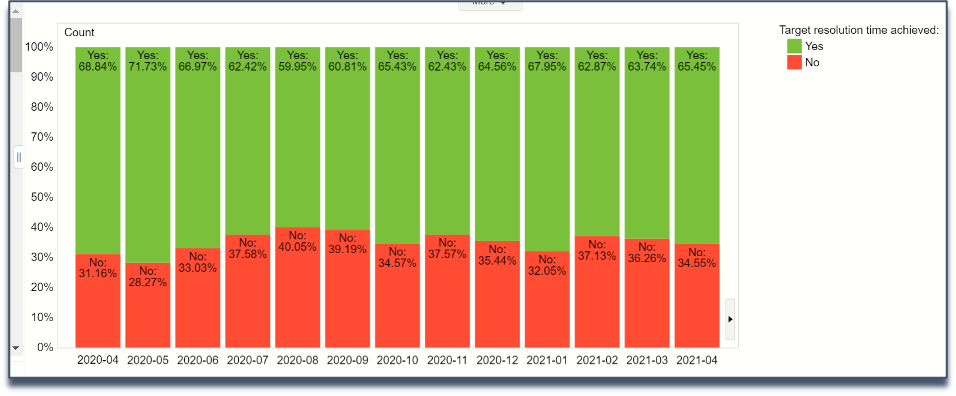
Are you struggling with measuring Operational Level Agreements or any other productivity metrics?
Efecte with its strong partner network can help to address your problem statements. Check the following link to contact us in case of any questions.

Written By - Jinu John
Recent blog posts
From Vision to Reality: How Our Annual Event is Shaping the Future of Service Management
September 9, 2024
In the rapidly changing world of service management, one thing has remained stable: the need to stay ahead of the curve. For the past three years,..
We implemented AI in our Service Desk: Here is what we found.
April 29, 2024
At Efecte, we often preach the benefits of AI for Service Management and we firmly believe in practicing what we preach. We have already talked about..
Will AI replace the Service Desk Agent?
April 2, 2024
The work of service desk teams is increasingly demanding, partly due to the higher complexity of the topics they address. Without more advanced..


